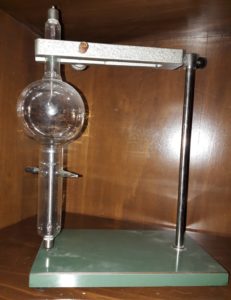
IT – Ideato dal tedesco Wilhelm Röntgen agli inizi del 1900 e basato sul cosiddetto effetto Brehmsstrahlung (in tedesco, frenamento), è un tipologia di tubo a vuoto destinata alla produzione di raggi X. Esso è costituito da una ampolla di vetro sotto vuoto spinto, che contiene un catodo e un anodo ad alta tensione. Il catodo è composto dal filamento riscaldatore e dal catodo vero e proprio collegato al circuito ad alta tensione. L’anodo invece, situato al polo opposto dell’ampolla, è costituito da un disco di metallo pesante. Gli elettroni sono emessi dal catodo surriscaldato e vanno a sbattere sull’anodo; la brusca decelerazione fa sì che la carica irraggi radiazioni ad altissima frequenza sulla base della formula di Planck E = h f.
GB – Röntgen tube – Conceived by the German Wilhelm Röntgen in the early 1900s and based on the so-called Brehmsstrahlung effect (in German, braking), it is a type of vacuum tube intended for the production of X-rays. It consists of a glass ampoule under high vacuum, a cathode and a high voltage anode. The cathode is composed of the heater filament and the actual cathode connected to the high voltage circuit. The anode instead, located at the opposite pole of the ampoule, is made up of a heavy metal disk. The electrons are emitted from the overheated cathode and collide on the anode; the sudden deceleration causes the charge to radiate very high frequency radiation based on the Planck formula E = h f.